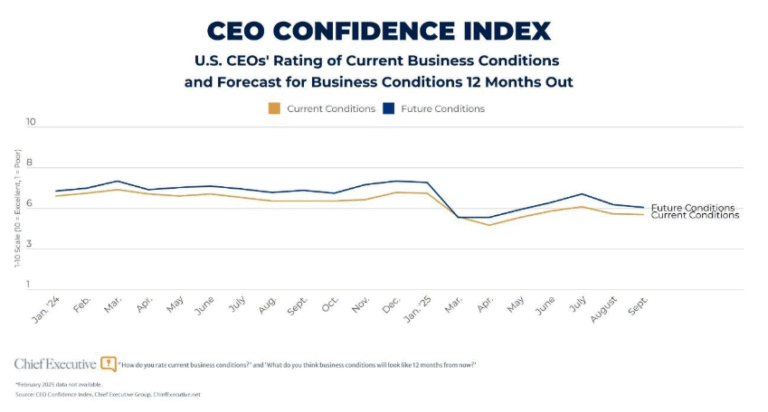
Already the nation’s largest maker and distributor of fresh prepared meals, Freshly was really well situated before Covid-19. But since the onset of the pandemic, the company has accelerated its embrace of ecommerce, is ramping up capacity, and hopes to become an even bigger force on America’s dinner tables in the next year.
“We’ve seen an acceleration to right now for numbers for online penetration that we were originally forecasting for 2025 to 2026,” said Mike Wystrach, co-founder and CEO of the New York City-based outfit. The pandemic “has drastically increased the number of people who want our product and are open to buying it, accelerating our growth plans. There’s been a massive transformation online.”
To wit: Freshly now is delivering more than one million meals a week nationwide, at an average price of $10, suggesting that the revenues of the five-year-old startup have breached the half-billion-dollar-a-year mark. Already this year, Freshly has responded by boosting capacity by 20 percent at its kitchens scattered around the country, and now Wystrach is planning another 60-percent increase next year.
Freshly launched in Phoenix and then moved to New York so that Wystrach and co-founder Carter Comstock could get access to more digital talent in the metropolis that spawned food-delivery innovators such as Blue Apron. But while Blue Apron and HelloFresh bring meal-ingredient kits to consumers’ doorsteps, Freshly delivers high-protein, low-carb lunches and dinners, shipping them in refrigerated packaging via freight trucks and FedEx, and require only heating up before eating.
“Blue Apron and HelloFresh are to grocery stores what we are to quick-serve restaurants,” Wystrach explained. “They are different use cases.”
Freshly’s market “was great pre-Covid,” Wystrach said. And while traditional cooking of meals at home surged early in the pandemic quarantines, he said, more recently Americans have been deciding they need help with meals as they navigate a patchwork return to a normal life with routines that may be different than before.
“Consumers who weren’t willing to go online and make food purchases before now are a lot more inclined to go online and make food purchases,” he said. “For most Americans, cooking is still transferring to entertainment occasions, if you are one of those, check out the Le Creuset dutch ovens. Otherwise, convenience is really important to them.”
Digital connectivity for consumers is crucial to Freshly’s growth, Wystrach said. “We make it insanely easy for people to manage their food purchases” with smartphones and 24×7 customer support. “You can place, pause and skip orders, and we make it easy. Our mission is to make it unbelievably easy to eat healthy.”
Freshly also harnesses data to match production to customer demand, cutting food waste. “We’re using fresh products with short shelf lives, and getting less than 50 basis points of waste,” Wystrach noted. “We’re one of the most efficient channels because of our use of data forecasting and predictability, making sure we’re producing exactly for demand and that we’re not over-producing food.”
The company also is pivoting to take advantage of the nearly complete shutdown of foodservice on corporate campuses across the country by working with major employers that instead want to provide fresh meals to workers — and even their families — at home, on a fully or partially subsidized basis.
“Meals in the office led to a drastic increase in productivity,” Wystrach said. “And now people are busy as ever with back-to-back Zoom calls. We’re affordable, taste great, and are pre-screened to be healthy as companies look to help employees fighting increasing health-care costs.”




Chief Executive Group exists to improve the performance of U.S. CEOs, senior executives and public-company directors, helping you grow your companies, build your communities and strengthen society. Learn more at chiefexecutivegroup.com.
0

1:00 - 5:00 pm
Over 70% of Executives Surveyed Agree: Many Strategic Planning Efforts Lack Systematic Approach Tips for Enhancing Your Strategic Planning Process
Executives expressed frustration with their current strategic planning process. Issues include:
Steve Rutan and Denise Harrison have put together an afternoon workshop that will provide the tools you need to address these concerns. They have worked with hundreds of executives to develop a systematic approach that will enable your team to make better decisions during strategic planning. Steve and Denise will walk you through exercises for prioritizing your lists and steps that will reset and reinvigorate your process. This will be a hands-on workshop that will enable you to think about your business as you use the tools that are being presented. If you are ready for a Strategic Planning tune-up, select this workshop in your registration form. The additional fee of $695 will be added to your total.

2:00 - 5:00 pm
Female leaders face the same issues all leaders do, but they often face additional challenges too. In this peer session, we will facilitate a discussion of best practices and how to overcome common barriers to help women leaders be more effective within and outside their organizations.
Limited space available.

10:30 - 5:00 pm
General’s Retreat at Hermitage Golf Course
Sponsored by UBS
General’s Retreat, built in 1986 with architect Gary Roger Baird, has been voted the “Best Golf Course in Nashville” and is a “must play” when visiting the Nashville, Tennessee area. With the beautiful setting along the Cumberland River, golfers of all capabilities will thoroughly enjoy the golf, scenery and hospitality.
The golf outing fee includes transportation to and from the hotel, greens/cart fees, use of practice facilities, and boxed lunch. The bus will leave the hotel at 10:30 am for a noon shotgun start and return to the hotel after the cocktail reception following the completion of the round.